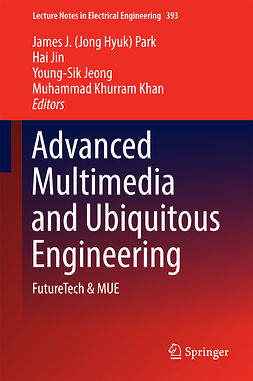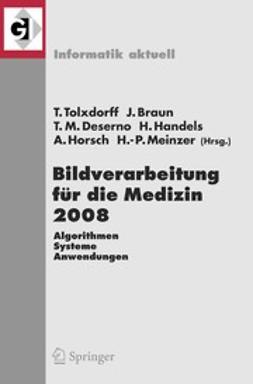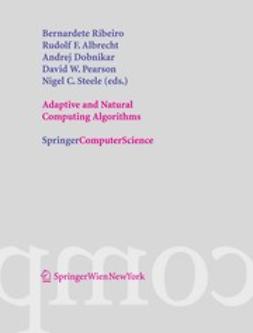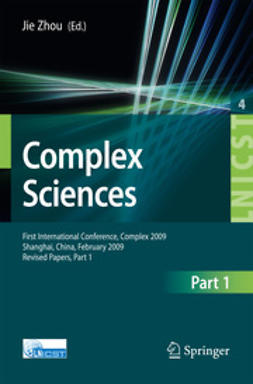Gaul, Wolfgang
Classification — the Ubiquitous Challenge
Part I. (Semi-) Plenary Presentations
1. Classification and Data Mining in Musicology
Jan Beran
2. Bayesian Mixed Membership Models for Soft Clustering and Classification
Elena A. Erosheva, Stephen E. Fienberg
3. Predicting Protein Secondary Structure with Markov Models
Paul Fischer, Simon Larsen, Claus Thomsen
4. Milestones in the History of Data Visualization: A Case Study in Statistical Historiography
Michael Friendly
5. Quantitative Text Typology: The Impact of Word Length
Peter Grzybek, Ernst Stadlober, Emmerich Kelih, Gordana Antic
6. Cluster Ensembles
Kurt Hornik
7. Bootstrap Confidence Intervals for Three-way Component Methods
Henk A.L. Kiers
8. Organising the Knowledge Space for Software Components
Claus Pahl
9. Multimedia Pattern Recognition in Soccer Video Using Time Intervals
Cees G.M. Snoek, Marcel Worring
10. Quantitative Assessment of the Responsibility for the Disease Load in a Population
Wolfgang Uter, Olaf Gefeller
Part II. Classification and Data Analysis
11. Bootstrapping Latent Class Models
José G. Dias
12. Dimensionality of Random Subspaces
Eugeniusz Gatnar
13. Two-stage Classification with Automatic Feature Selection for an Industrial Application
Sören Hader, Fred A. Hamprecht
14. Bagging, Boosting and Ordinal Classification
Klaus Hechenbichler, Gerhard Tutz
15. A Method for Visual Cluster Validation
Christian Hennig
16. Empirical Comparison of Boosting Algorithms
Riadh Khanchel, Mohamed Limam
17. Iterative Majorization Approach to the Distance-based Discriminant Analysis
Serhiy Kosinov, Stéphane Marchand-Maillet, Thierry Pun
18. An Extension of the CHAID Tree-based Segmentation Algorithm to Multiple Dependent Variables
Jay Magidson, Jeroen K. Vermunt
19. Expectation of Random Sets and the ‘Mean Values’ of Interval Data
Ole Nordhoff
20. Experimental Design for Variable Selection in Data Bases
Constanze Pumplün, Claus Weihs, Andrea Preusser
21. KMC/EDAM: A New Approach for the Visualization of K-Means Clustering Results
Nils Raabe, Karsten Luebke, Claus Weihs
22. Clustering of Variables with Missing Data: Application to Preference Studies
Karin Sahmer, Evelyne Vigneau, Mostafa Qannari, Joachim Kunert
23. Binary On-line Classification Based on Temporally Integrated Information
Christin Schäfer, Steven Lemm, Gabriel Curio
24. Different Subspace Classification
Gero Szepannek, Karsten Luebke
25. Density Estimation and Visualization for Data Containing Clusters of Unknown Structure
Alfred Ultsch
26. Hierarchical Mixture Models for Nested Data Structures
Jeroen K. Vermunt, Jay Magidson
27. Iterative Proportional Scaling Based on a Robust Start Estimator
Claudia Becker
28. Exploring Multivariate Data Structures with Local Principal Curves
Jochen Einbeck, Gerhard Tutz, Ludger Evers
29. A Three-way Multidimensional Scaling Approach to the Analysis of Judgments About Persons
Sabine Krolak-Schwerdt
30. Discovering Temporal Knowledge in Multivariate Time Series
Fabian Mörchen, Alfred Ultsch
31. A New Framework for Multidimensional Data Analysis
Shizuhiko Nishisato
32. External Analysis of Two-mode Three-way Asymmetric Multidimensional Scaling
Akinori Okada, Tadashi Imaizumi
33. The Relevance Vector Machine Under Covariate Measurement Error
David Rummel
Part III. Applications
34. A Contribution to the History of Seriation in Archaeology
Peter Ihm
35. Model-based Cluster Analysis of Roman Bricks and Tiles from Worms and Rheinzabern
Hans-Joachim Mucha, Hans-Georg Bartel, Jens Dolata
36. Astronomical Object Classification and Parameter Estimation with the Gaia Galactic Survey Satellite
Coryn A.L. Bailer-Jones
37. Design of Astronomical Filter Systems for Stellar Classification Using Evolutionary Algorithms
Coryn A.L. Bailer-Jones
38. Analyzing Microarray Data with the Generative Topographic Mapping Approach
Isabelle M. Grimmenstein, Karsten Quast, Wolfgang Urfer
39. Test for a Change Point in Bernoulli Trials with Dependence
Joachim Krauth
40. Data Mining in Protein Binding Cavities
Katrin Kupas, Alfred Ultsch
41. Classification of
Björn H. Menze, Michael Wormit, Peter Bachert, Matthias Lichy, Heinz-Peter Schlemmer, Fred A. Hamprecht
42. Modifying Microarray Analysis Methods for Categorical Data — SAM and PAM for SNPs
Holger Schwender
43. Improving the Identification of Differentially Expressed Genes in cDNA Microarray Experiments
Alfred Ultsch
44. PhyNav: A Novel Approach to Reconstruct Large Phylogenies
Sy Vinh, Heiko A. Schmidt, Arndt Haeseler
45. NewsRec, a Personal Recommendation System for News Websites
Christian Bomhardt, Wolfgang Gaul
46. Clustering of Large Document Sets with Restricted Random Walks on Usage Histories
Markus Franke, Anke Thede
47. Fuzzy Two-mode Clustering vs. Collaborative Filtering
Volker Schlecht, Wolfgang Gaul
48. Web Mining and Online Visibility
Nadine Schmidt-Mänz, Wolfgang Gaul
49. Analysis of Recommender System Usage by Multidimensional Scaling
Patrick Thoma, Wolfgang Gaul
50. On a Combination of Convex Risk Minimization Methods
Andreas Christmann
51. Credit Scoring Using Global and Local Statistical Models
Alexandra Schwarz, Gerhard Arminger
52. Informative Patterns for Credit Scoring: Support Vector Machines Preselect Data Subsets for Linear Discriminant Analysis
Ralf Stecking, Klaus B. Schebesch
53. Application of Support Vector Machines in a Life Assurance Environment
Sarel J. Steel, Gertrud K. Hechter
54. Continuous Market Risk Budgeting in Financial Institutions
Mario Straßberger
55. Smooth Correlation Estimation with Application to Portfolio Credit Risk
Rafael Weißbach, Bernd Rosenow
56. How Many Lexical-semantic Relations are Necessary?
Dariusch Bagheri
57. Automated Detection of Morphemes Using Distributional Measurements
Christoph Benden
58. Classification of Author and/or Genre? The Impact of Word Length
Emmerich Kelih, Gordana Antic, Peter Grzybek, Ernst Stadlober
59. Some Historical Remarks on Library Classification — a Short Introduction to the Science of Library Classification
Bernd Lorenz
60. Automatic Validation of Hierarchical Cluster Analysis with Application in Dialectometry
Hans-Joachim Mucha, Edgar Haimerl
61. Discovering the Senses of an Ambiguous Word by Clustering its Local Contexts
Reinhard Rapp
62. Document Management and the Development of Information Spaces
Ulfert Rist
63. Stochastic Ranking and the Volatility “Croissant”: A Sensitivity Analysis of Economic Rankings
Helmut Berrer, Christian Helmenstein, Wolfgang Polasek
64. Importance Assessment of Correlated Predictors in Business Cycles Classification
Daniel Enache, Claus Weihs
65. Economic Freedom in the 25-Member European Union: Insights Using Classification Tools
Clifford W. Sell
66. Intercultural Consumer Classifications in E-Commerce
Hans H. Bauer, Marcus M. Neumann, Frank Huber
67. Reservation Price Estimation by Adaptive Conjoint Analysis
Christoph Breidert, Michael Hahsler, Lars Schmidt-Thieme
68. Estimating Reservation Prices for Product Bundles Based on Paired Comparison Data
Bernd Stauß, Wolfgang Gaul
69. Classification of Perceived Musical Intervals
Jobst P. Fricke
70. In Search of Variables Distinguishing Low and High Achievers in Music Sight Reading Task
Reinhard Kopiez, Claus Weihs, Uwe Ligges, Ji In Lee
71. Automatic Feature Extraction from Large Time Series
Ingo Mierswa
72. Identification of Musical Instruments by Means of the Hough-Transformation
Christian Röver, Frank Klefenz, Claus Weihs
73. Support Vector Machines for Bass and Snare Drum Recognition
Dirk Steelant, Koen Tanghe, Sven Degroeve, Bernard Baets, Marc Leman, Jean-Pierre Martens
74. Register Classification by Timbre
Claus Weihs, Christoph Reuter, Uwe Ligges
75. Classification of Processes by the Lyapunov Exponent
Anja M. Busse
76. Desirability to Characterize Process Capability
Jutta Jessenberger, Claus Weihs
77. Application and Use of Multivariate Control Charts in a BTA Deep Hole Drilling Process
Amor Messaoud, Winfried Theis, Claus Weihs, Franz Hering
78. Determination of Relevant Frequencies and Modeling Varying Amplitudes of Harmonic Processes
Winfried Theis, Claus Weihs
Part IV. Contest: Social Milieus in Dortmund
79. Introduction to the Contest “Social Milieus in Dortmund”
Ernst-Otto Sommerer, Claus Weihs
80. Application of a Genetic Algorithm to Variable Selection in Fuzzy Clustering
Christian Röver, Gero Szepannek
81. Annealed
Christin Schäfer, Julian Laub
82. Correspondence Clustering of Dortmund City Districts
Stefanie Scheid
DRM-restrictions
Printing: not available
Clipboard copying: not available
Avainsanat: COMPUTERS / Computer Science COM014000
- Tekijä(t)
- Gaul, Wolfgang
- Weihs, Claus
- Julkaisija
- Springer
- Julkaisuvuosi
- 2005
- Kieli
- en
- Painos
- 1
- Kategoria
- Tietotekniikka, tietoliikenne
- Tiedostomuoto
- E-kirja
- eISBN (PDF)
- 9783540280842











